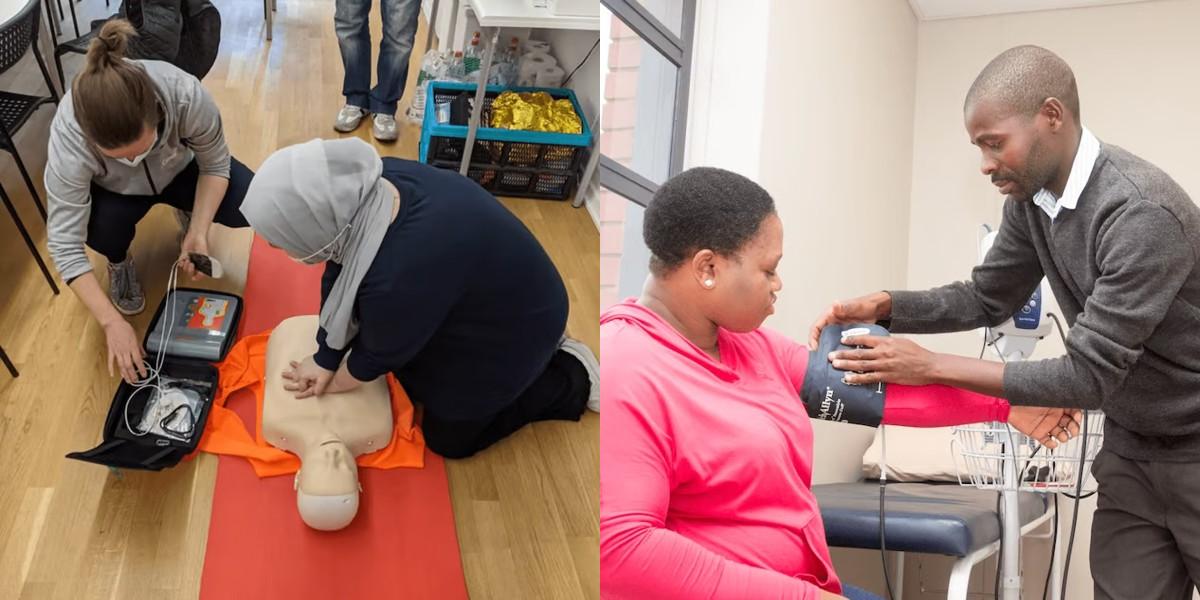CPR-BLS vs Medical Assistant

When it comes to healthcare careers, there are many different paths you can take. Two popular options are becoming a CPR-BLS (Basic Life Support) provider or pursuing a career as a Medical Assistant. While both of these careers involve working in the healthcare field, there are some key differences between them. In this blog post, we will explore the differences between a CPR-BLS provider and a Medical Assistant, including their job descriptions, education and training requirements, and career outlooks.
CPR-BLS Education and Training
- CPR-BLS training programs are typically short and can be completed in a matter of hours. These programs cover basic life-saving techniques such as CPR, using an AED, and providing first aid.
- CPR-BLS certification is usually obtained through organizations such as the American Heart Association (AHA) or the Red Cross. Certification requires passing a written exam and demonstrating competency in performing CPR and using an AED.
Medical Assistant Education and Training
- Medical Assistants typically complete a certificate or diploma program, which can take anywhere from several months to two years to complete. These programs cover a wide range of topics, including medical terminology, anatomy and physiology, pharmacology, and patient care.
- Some Medical Assistants choose to pursue an associate's degree in Medical Assisting, which usually takes two years to complete and offers a more comprehensive education.
- In addition to completing a formal education program, Medical Assistants may also choose to become certified. Certification can be obtained through organizations such as the American Association of Medical Assistants (AAMA) or the National Healthcareer Association (NHA). Certification typically requires passing an exam and meeting certain education and experience requirements.
CPR-BLS vs Medical Assistant: Career Outlook and Salary
When considering a career in either CPR-BLS or Medical Assisting, it's important to think about the career outlook and potential salary.
CPR-BLS Career Outlook and Salary
- According to the Bureau of Labor Statistics (BLS), the employment of EMTs and Paramedics (which includes CPR-BLS providers) is projected to grow 6 percent from 2019 to 2029, which is faster than the average for all occupations.
- The median annual wage for EMTs and Paramedics was $35,400 in May 2020, according to the BLS.
Medical Assistant Career Outlook and Salary
- The BLS projects that the employment of Medical Assistants will grow 19 percent from 2019 to 2029, much faster than the average for all occupations.
- The median annual wage for Medical Assistants was $35,850 in May 2020, according to the BLS.
Final Thoughts
Both CPR-BLS providers and Medical Assistants play important roles in the healthcare field. While CPR-BLS providers focus on providing immediate care in life-threatening emergencies, Medical Assistants have a broader scope of practice and are involved in various aspects of patient care. Ultimately, the choice between a career as a CPR-BLS provider or a Medical Assistant depends on your interests, strengths, and career goals. It's important to carefully consider the differences between these two careers and choose the path that aligns with your personal and professional aspirations.
Dive into the expansive reach of Dreambound's programs across various locations. For a detailed exploration of the two vocations, visit the suggested blogs to uncover specific requirements and gain valuable perspectives on how to commence your journey effectively.

Joanna Paragas is part of the Growth team at Dreambound. Her primary role involves creating various automation to streamline workflows and make tasks more efficient for the entire team. Beyond her professional endeavors, Joanna enjoys spending her free time playing with her dogs and enhancing her knowledge by enrolling in online courses.





